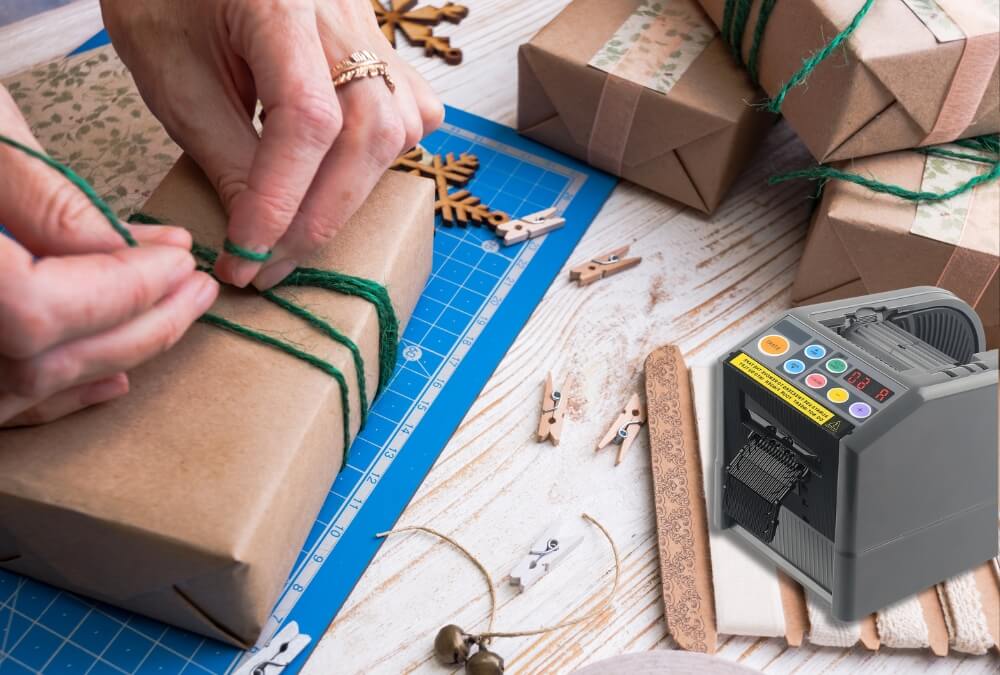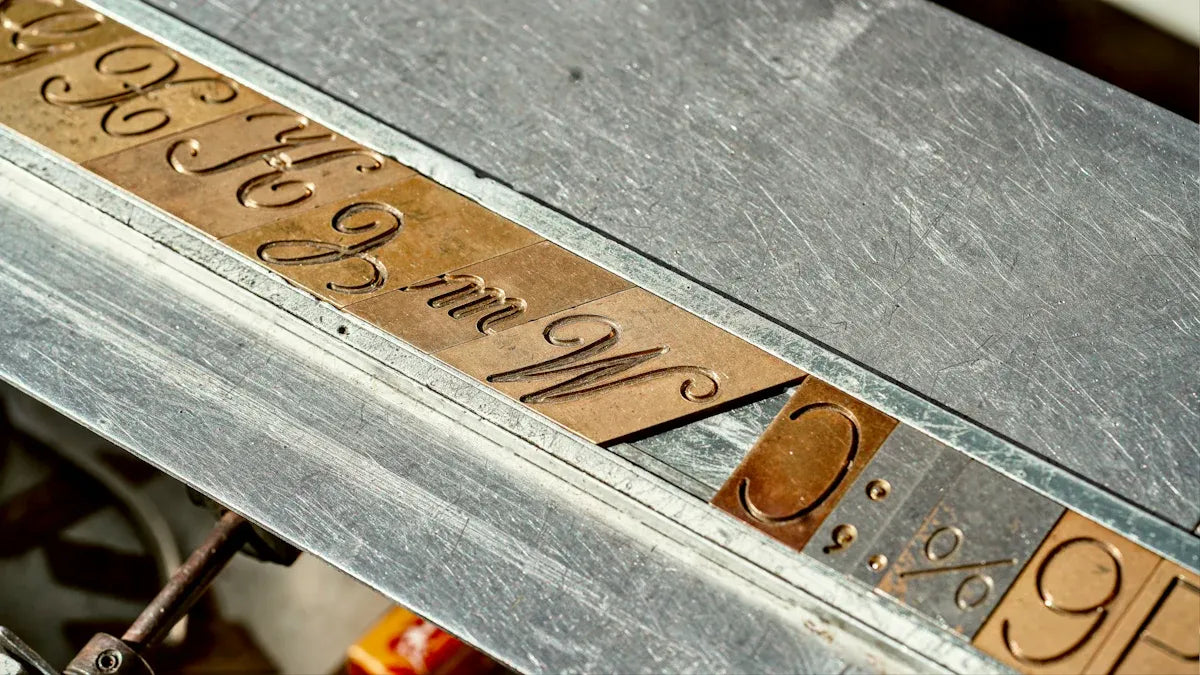Imagine turning normal items into special, unique treasures. Using an engraving pen, you can quickly make things personal. It works for gifts or keepsakes that mean a lot. People love personalized items, and the market is growing fast. Luxury pens are expected to grow from 2.24 billion USD in 2025 to 3.47 billion USD by 2034. Tools like the Customizer Engraving Pen make this easy and fun for anyone.
Key Takeaways
- Pick an engraving pen that matches your skill and materials. Beginners should use pens with easy grips and speed settings.
- Try engraving on spare materials before your real project. This helps you get better control and feel confident using the pen.
- Use stencils or templates to make your work precise. They help guide your designs and make them look professional, especially for new users.

Getting Started with an Engraving Pen
Choosing the Right Engraving Pen for Your Needs
Finding the best engraving pen is the first step. Pick one that fits your skill level and project materials. Beginners should use pens with comfy grips and adjustable speeds. These are easier to handle and great for learning. For harder materials like metal or glass, choose pens with more power. They can engrave well without losing accuracy.
Essential Tools and Materials for Engraving
The right tools and materials make engraving easier and more fun. Here’s a simple guide:
| Evidence Point | Description |
|---|---|
| Surface Quality | Good tools make smoother surfaces and remove material better. |
| Productivity | Quality tools save time and work faster. |
| Fluence Correlation | Fluence affects how well tools engrave and perform. |
| Scanning Speed Impact | Faster speeds create cleaner and smoother results. |
| Material Behavior | Materials like steel and zirconia react differently to tools. |
| Power Settings | Medium power gives smooth and precise engraving results. |
| Passes Effect | More passes remove extra material for deeper designs. |
Start with soft materials like wood or acrylic. These are simple to engrave and help you practice.
Safety Tips to Keep in Mind
Always stay safe when using an engraving pen. Wear safety glasses to protect your eyes from flying bits or bright light. Gloves can keep your hands safe from burns or irritation. Make sure your workspace has good airflow to avoid breathing harmful fumes. Keep flammable things far away to prevent fires.
- Eye injuries: Use glasses to shield your eyes from laser light.
- Skin injuries: Wear gloves to avoid burns or skin damage.
- Fire hazards: Keep flammable objects out of your workspace.
- Air contaminants: Ventilate your area to avoid breathing bad fumes.
Preparing Your Workspace and Items for Engraving
A tidy workspace helps you do better work. Set up areas for prepping and finishing your projects. This keeps you organized and focused. Clean your items before engraving to remove dirt or grease. This makes the engraving smoother. For round designs, use a special machine to make it easier. Check your work during and after engraving to ensure high quality. This way, you’ll create pieces you’re proud of.
Mastering the Grip and Pen Control: How Should You Hold It for Optimal Results?
Finding a comfortable yet firm grip (pencil grip vs. other techniques)
How you hold your engraving pen affects your results. Beginners often prefer the pencil grip. This grip feels natural and is easy to control. It helps with detailed designs and small areas. For bigger surfaces, try the palm grip. This lets your hand rest on the surface. It reduces strain during long engraving sessions. Test both grips to find what works best for you.
The importance of consistent angle and orientation
Keeping the same angle while engraving is very important. A steady angle makes smooth lines and even depths. Experts suggest using a 30° angle for better visibility. This angle also helps designs look sharper and more professional. Research shows steady angles guide alignment, like grooves on a surface. Whether engraving wood or glass, keep your hand steady and your angle consistent.
-
Why it matters:
- Avoids uneven or rough lines.
- Improves the quality of your design.
- Makes engraving easier and more predictable.
Practicing basic strokes: straight lines, curves, circles on scrap material (e.g., soft wood)
Before starting your main project, practice on scrap materials. Use soft wood or acrylic for simple strokes. Try straight lines, curves, and circles to build control. These shapes help you improve your skills over time. Move slowly and apply even pressure. With practice, your lines will become smoother and more accurate.
Pro Tip: Start with light pressure. You can always make engravings deeper later.
Tool Tip: Recommending beginner-friendly pens with ergonomic designs
If you’re new, pick an engraving pen made for beginners. Look for one with a comfy grip to avoid hand strain. Many beginner pens are easy to use and highly rated. For example:
| Rating | Review Summary |
|---|---|
| 4.2/5 | Users love its comfort and ease of use. |
| N/A | Feels like holding a pencil; great for learning. |
| N/A | Perfect for all skill levels; simplifies crafting. |
| N/A | Easy to use; no experience needed for great results. |
A good pen makes engraving fun and helps you focus on improving your skills.
Mastering Pressure Control: How Much Force Should You Use?
Light vs. Heavy Pressure: What Works Best for Each Material
How hard you press with your engraving pen changes your design. Use light pressure for fragile materials like glass or thin metal. This makes neat lines without breaking or scratching the surface. For stronger materials like wood or leather, press harder. This creates deeper grooves that stand out more.
It’s like writing with a pencil. Pressing too hard can rip the paper, while pressing too softly leaves faint marks. Every material reacts differently, so always test on scrap material first.
Practice Exercises for Steady Pressure and Even Lines
Getting steady pressure takes practice, but it’s simple to learn. Start by engraving straight lines on soft wood or acrylic. Focus on keeping the same pressure the whole time. Then, try shapes like circles or waves. These exercises help you build control and muscle memory.
Pro Tip: Use your other hand to hold the item steady. This keeps it from moving and helps you apply even pressure.
Why Starting Light is the Best Approach
When unsure, start with light strokes. Light pressure gives you more control and fewer mistakes. You can always go back and make the lines deeper later. Pressing too hard at first can leave marks that are hard to fix. Light strokes also let you slowly improve your design for a polished look.
Fixing Problems: Skipped Lines or Deep Marks
If your pen skips or makes uneven lines, you’re pressing too lightly. Add a bit more pressure until the lines are smooth. If you see deep marks or rough edges, ease up on the force. Changing your grip or angle can also help fix these problems.
Quick Tip: Practice on scrap pieces until you find the right pressure. It’s all about trying and learning!
Simple Techniques for Personalization
Practicing on Scrap Materials
Before starting your main project, practice on scrap materials first. Think of it like warming up before playing a sport. It helps you get used to your engraving pen and how it works on different surfaces. Begin with soft materials like wood or acrylic. These are easier to work with and let you try without fear of mistakes.
Here’s how to practice:
- Test your pen settings on scrap pieces. Change the speed, power, and pressure to see what works best.
- Make a test grid with different settings. For example, try using more pressure in one row and less in another.
- Use these tests to improve your skills before working on your real item.
Pro Tip: Practicing on scraps helps you get better and feel more confident. You’ll be ready to create your final design!
Using Templates and Stencils for Accuracy
If freehand engraving feels tricky, templates and stencils can help. They guide you to make neat and professional designs. You can find stencils for letters, shapes, or patterns. Place the stencil on your item, trace lightly, and then engrave over it.
Benefits of using templates include:
| Metric | Before Laser | After Laser | Improvement |
|---|---|---|---|
| Productivity Increase | N/A | 20% | 20% |
| Precision | N/A | Superior | N/A |
| Material Waste | N/A | Less Waste | N/A |
Templates save time and reduce waste. They’re great for beginners who want consistent results.
Quick Tip: Tape your stencil down so it doesn’t move while you engrave. This keeps your design in place.
Adjusting Pressure and Depth for Different Effects
Changing pressure and depth can make your engraving look very different. Light pressure makes thin, shallow lines, which are good for glass or thin metal. Heavy pressure creates deep, bold grooves, perfect for wood or leather.
Here’s a quick guide:
- High speeds (600 mm/s and above): Best for light, quick engraving.
- Medium speeds (100 mm/s to 600 mm/s): Good for detailed, deeper designs.
- Low speeds (50 mm/s or less): Best for cutting through materials.
- Higher power settings: Remove more material for deeper designs.
- Lower power settings: Make lighter, softer engravings.
Note: Match your line width to your engraving depth. Wider lines work better for deeper designs and give a smooth finish.
Try these settings on scrap materials to see how they change your design. You’ll quickly learn how to get the look you want.
Freehand Engraving Tips for Beginners
Freehand engraving might seem hard, but you can learn it with practice. Start with simple designs like letters or shapes. Use a pencil to draw your design on the surface first. This gives you a guide to follow.
Here are some tips to help:
- Keep your hand steady: Rest your wrist on the table or item for control.
- Start with light strokes: Trace your design lightly before making deeper lines.
- Take breaks: Engraving takes focus. Short breaks can prevent hand strain.
Encouragement: Don’t worry about being perfect. Freehand engraving adds a personal touch. Your unique style will make it special!
Creative Ideas for Personalization
Engraving on Wood: Rustic and Timeless Designs
Wood is great for engraving because it’s versatile and charming. It has a natural look that stays stylish forever. You can personalize cutting boards, photo frames, or keepsake boxes. Engraving on wood gives them a classic and special touch.
Different woods have unique features for engraving:
| Wood Type | Durability | Look and Feel |
|---|---|---|
| Maple | Strong | Light color; smooth texture for detailed designs |
| Walnut | Strong | Dark tones; beautiful grain for a fancy look |
| Cherry | Strong | Reddish color; smooth surface that ages well |
| Pine | Medium | Light color; rustic charm; easy to engrave |
| Cedar | Strong | Smells nice; reddish tones; resists damage |
| Spruce | Medium | Pale color; fine texture for neat designs |
Start with softwoods like pine or spruce to practice. They’re easier to work with and help you learn. Once you’re confident, try hardwoods like walnut or cherry for detailed designs.
Tip: Keep your engraving pen steady to make clean lines.
Personalizing Glassware for Special Occasions
Engraved glassware makes events feel extra special. Weddings, anniversaries, or parties become memorable with custom designs. You can engrave names, dates, or quotes on wine glasses, flutes, or jars.
Why engraved glassware is loved:
| Feature | Benefit |
|---|---|
| Personal Touch | Makes items meaningful and memorable for customers. |
| Branding | Custom logos or designs make brands stand out. |
| Event Specific Designs | Tailored items add value to special occasions. |
Beginners can start with simple designs like initials or small patterns. Use light pressure to avoid breaking the glass. If you’re skilled, try detailed designs like flowers or patterns.
Pro Tip: Secure the glass with tape to keep it steady while engraving.
Customizing Metal Items Like Jewelry and Tools
Metal engraving lets you create unique gifts and keepsakes. You can personalize jewelry like rings or necklaces with names or symbols. Tools like pocket knives or hammers can also be engraved for a special touch.
Metal engraving is growing fast:
- The market for metal engraving machines may grow from $1.5 billion in 2023 to $2.3 billion by 2032.
- Personalized jewelry sales could reach $42.38 billion by 2025.
- Laser engraving makes detailed designs easier and more popular.
Use an engraving pen with adjustable speed for metal. Start lightly and deepen the design slowly. This avoids mistakes and gives a polished finish.
Note: Test your design on scrap metal before working on the final piece.
Adding Unique Touches to Leather Accessories
Leather items like wallets, belts, or keychains look amazing with engravings. You can add names, initials, or short quotes to make them unique.
People love personalized leather products:
| Statistic | Insight |
|---|---|
| 59% | Many buyers prefer brands offering customization. |
| 20% | Customers may pay more for custom items. |
| 75% | Gen Z loves products they can personalize. |
| 50% | Customized items are seen as great gifts. |
Leather is forgiving, so it’s good for beginners. Use light pressure to avoid damaging the surface. For bold designs, increase depth slowly.
Quick Tip: Apply leather conditioner after engraving to improve its look and durability.
Perfect Gift Ideas with Personalized Engravings
Engraved items make thoughtful gifts for any occasion. Here are some ideas:
- Weddings: Custom wine glasses, photo frames, or cutting boards.
- Birthdays: Personalized jewelry, wallets, or keychains.
- Anniversaries: Engraved glassware, metal keepsakes, or wooden love notes.
- Holidays: Festive ornaments, candles, or leather bookmarks.
The engraving market is growing fast. In 2023, it was worth $2.5 billion and could reach $4.5 billion by 2032. This shows how much people value personalized gifts.
Encouragement: Use your engraving pen to make gifts that are both beautiful and meaningful.
Tips for Success with an Engraving Pen
Keeping Items Steady While Engraving
Hold your items firmly to make neat and clear engravings. If the material moves, your design can get messed up or cause problems. Use jigs to keep items in place. Jigs hold materials tightly and stop them from slipping.
- Jigs help you make designs that look the same every time.
- They also make your workspace safer by stopping sudden movements.
For small things like jewelry or glassware, tape or clamps work well too. Always check that your item is secure before you start engraving.
Cleaning and Taking Care of Your Engraving Pen
A clean pen works better and lasts longer. Dust and dirt can build up and make it less effective. Wipe your pen often with a soft cloth to keep it clean. For deeper cleaning, follow the instructions from the maker.
Taking care of your pen helps it last longer. For example:
- CO2 laser tubes can work for 1,200 to 2,550 hours.
- Fiber lasers can last up to 100,000 hours.
Regular cleaning keeps your pen ready for all your projects.
Preventing Overheating and Making Your Tool Last
Overheating can harm your pen and make it wear out faster. Take breaks during long engraving sessions to let it cool down. If your pen has speed settings, use lower speeds for delicate materials. This helps reduce stress on the tool.
Store your pen in a dry, cool place when not in use. This protects it from heat and moisture, which can damage its parts.
Fixing Common Engraving Problems
Mistakes happen, but most can be fixed with practice. If your lines are uneven, check how you’re holding the pen and pressing down. A steady grip and even pressure usually fix this.
Skipped lines mean you’re pressing too lightly. Add a bit more pressure. Deep marks mean you’re pressing too hard. Try using less force and practice on scrap material to find the right amount.
Quick Tip: If your design isn’t perfect, don’t worry. Use light strokes to fix or improve it. Practice makes you better!
Using an engraving pen lets you create many unique designs. Begin with easy patterns and practice often to get better. Try using various materials to see which ones you like most. Custom items are great for gifts and memories, so pick up your pen and make something amazing today!
FAQ
How do I clean my engraving pen after use?
Wipe the pen tip with a soft cloth. For stubborn residue, use a small brush or follow the manufacturer’s cleaning instructions.
Can I engrave on painted surfaces?
Yes, but test on a small area first. Paint can chip or flake, so use light pressure and steady strokes for better results.
What’s the best way to fix engraving mistakes?
Lightly sand the surface or polish it to reduce visibility. Practice on scrap material to avoid repeating the same mistake.









Leave a comment
This site is protected by hCaptcha and the hCaptcha Privacy Policy and Terms of Service apply.